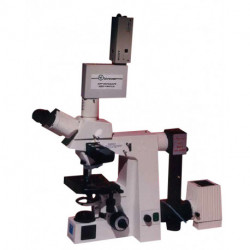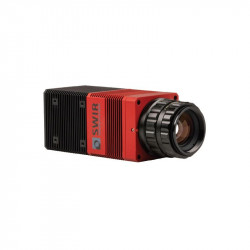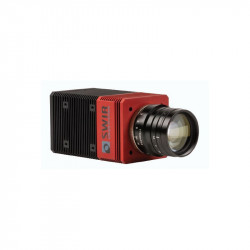Cámaras científicas Hay 4 productos.
Los criterios principales para la elección de una cámara científica incluyen alta sensibilidad, bajo ruido, alta resolución, y baja corriente oscura. Estas especificaciones permiten reproducir mínimas diferencias en la imagen, de manera que pequeños detalles sean visibles para el ojo humano. El tipo de sistema de refrigeración y de sensor, así como la electrónica utilizada, juegan un importante papel en este tipo de cámaras.
Adaptador de vídeo cámara-microscopio
Adaptador de vídeo para microscopios basado en filtro sintonizable acusto óptico en los rangos VIS-NIR
Acuros eSWIR-Camera Full-HD
The Acuros eSWIR HD series from SWIR Vision Systems deliver highest-resolution images in the range from 400 to 2100 nm. Due to the absence of InGaAs semiconductor materials, the camera is not subject to dual-use classification and thus less export restrictions.
Acuros eSWIR-Camera 1 Megapixel
The 1 Megapixel cameras of the Acuros eSWIR series from SWIR Vision deliver high-resolution images in the visible range up to the extended SWIR (400 - 2100 nm) band. Due to the absence of InGaAs semiconductor materials, the camera is not subject to dual-use classification and thus less export restrictions.
Acuros eSWIR-Camera VGA
The Acuros eSWIR VGA series from SWIR Vision Systems deliver crisp images in the range from 400 to 2100 nm. Due to the absence of InGaAs semiconductor materials, the camera is not subject to dual-use classification and thus less export restrictions.




